These Pizza Shops Are Also Serving Up Super Inspiring Design
As a big fan of pizza, I'm usually thinking about the crust or toppings or number of slices I want to consume. Lately, it turns out there's another aspect that has me transfixed, and it's the amazing designs and interiors of pizza shops popping up all over the world. Here, we take a peek inside seven different pizzerias. Prepare to find a lot of wild tilework, wooden chairs any minimalist would love, and some incredibly exciting color combinations..
Oversize Pizza Club
The first pizzeria that caught my eye due to its impressive interior: Oversize Pizza Club. Located in an old printing equipment factory in St. Petersburg, Russia, the restaurant was designed by Lesha Galkin of Facultative Works. The goal was to create an atmosphere where people would want to come after a hard day at work to relax and share a slice with friends. The slices themselves are wild, measuring 65 centimeters (that's nearly 26 inches to us Americans)—essentially a full pie in the shape of a single slice. All the tables, chairs, lighting, and sinks are custom-made and the color palette is a really interesting combination of teals, greens, and pinkish reds.
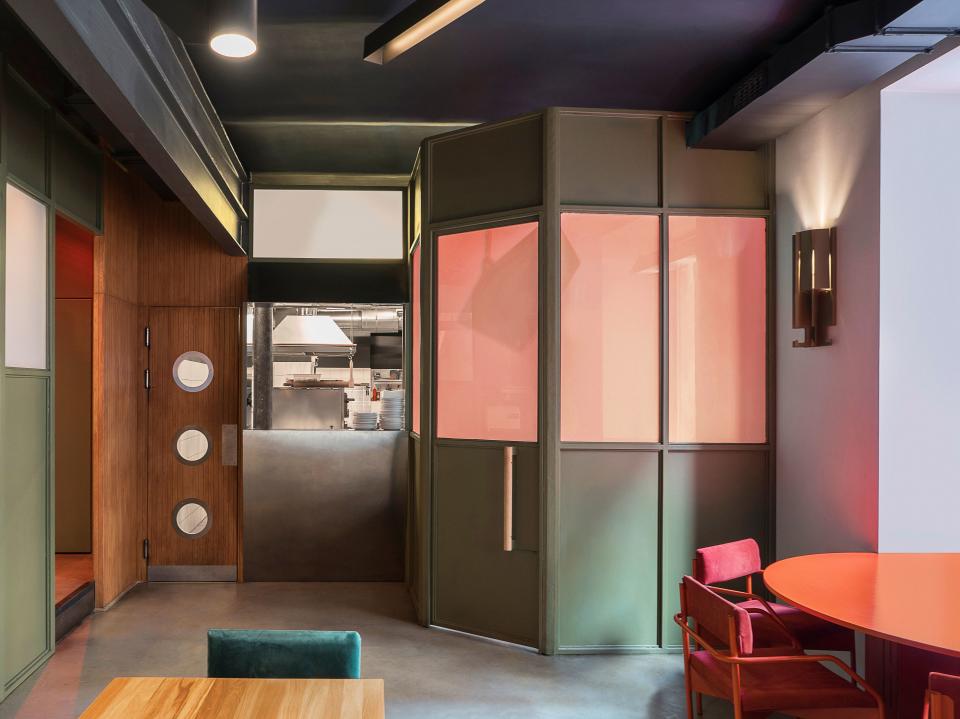
oversize-pizza-3.jpg
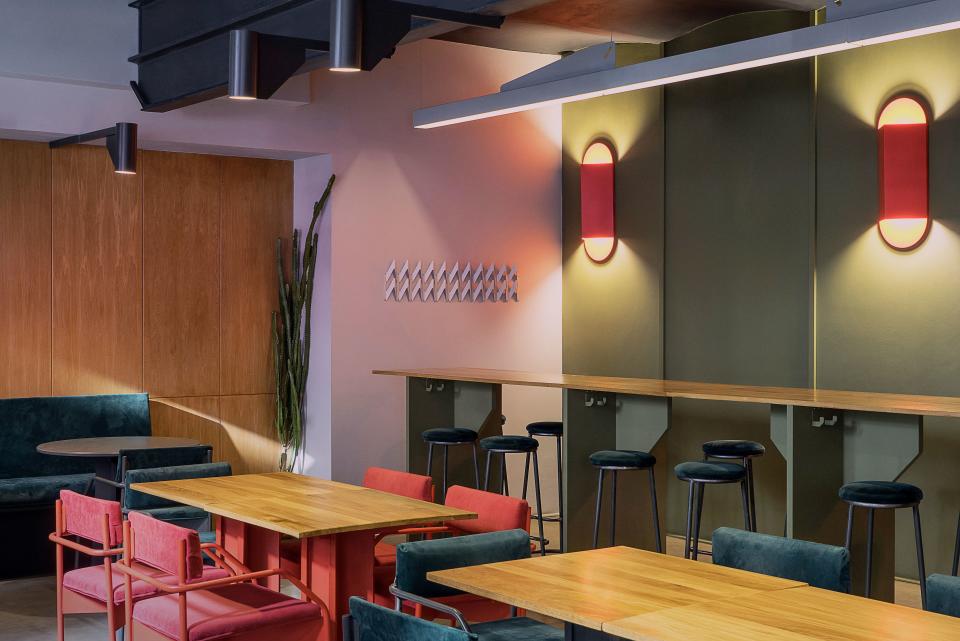
oversize-pizza-2.jpg
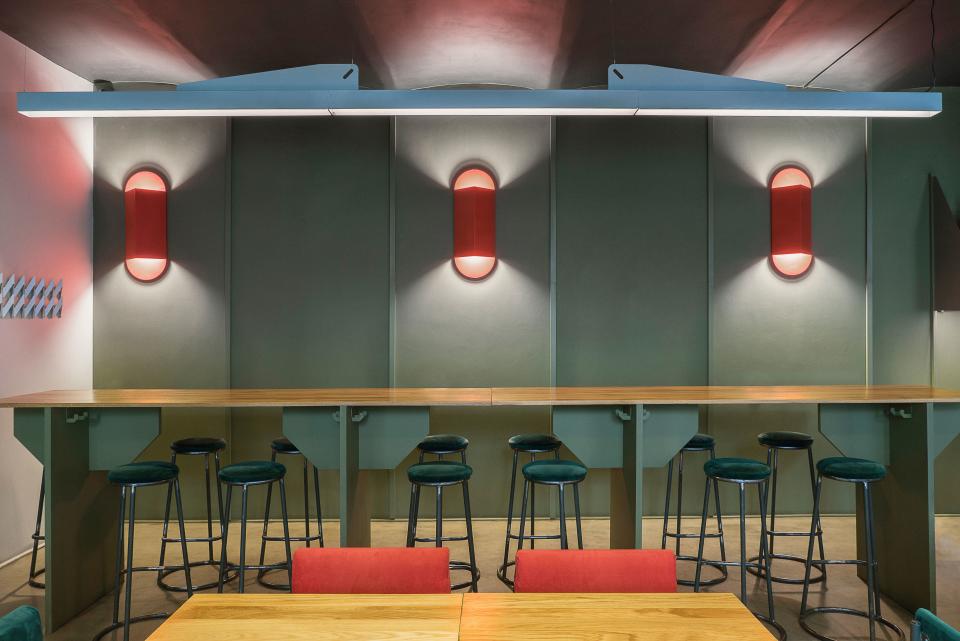
oversize-pizza-1.jpg
Orno Pizzería
Next up is the newly opened Orno Pizzería in Olivos, Argentina, a project by Guadalupe García Mosqueda and her group Mezcla. Teaming up with her brother Juan Agustín García Mosqueda, founder of design gallery Chamber NYC, she designed the space around the oven, making the preparation of the pizza the main spectacle. Guadalupe wants no one left out from the burning heat of the fire! Inside and out, the whole place pops with shades of teal and blue—you can't go wrong when you stick with one side of the color wheel.
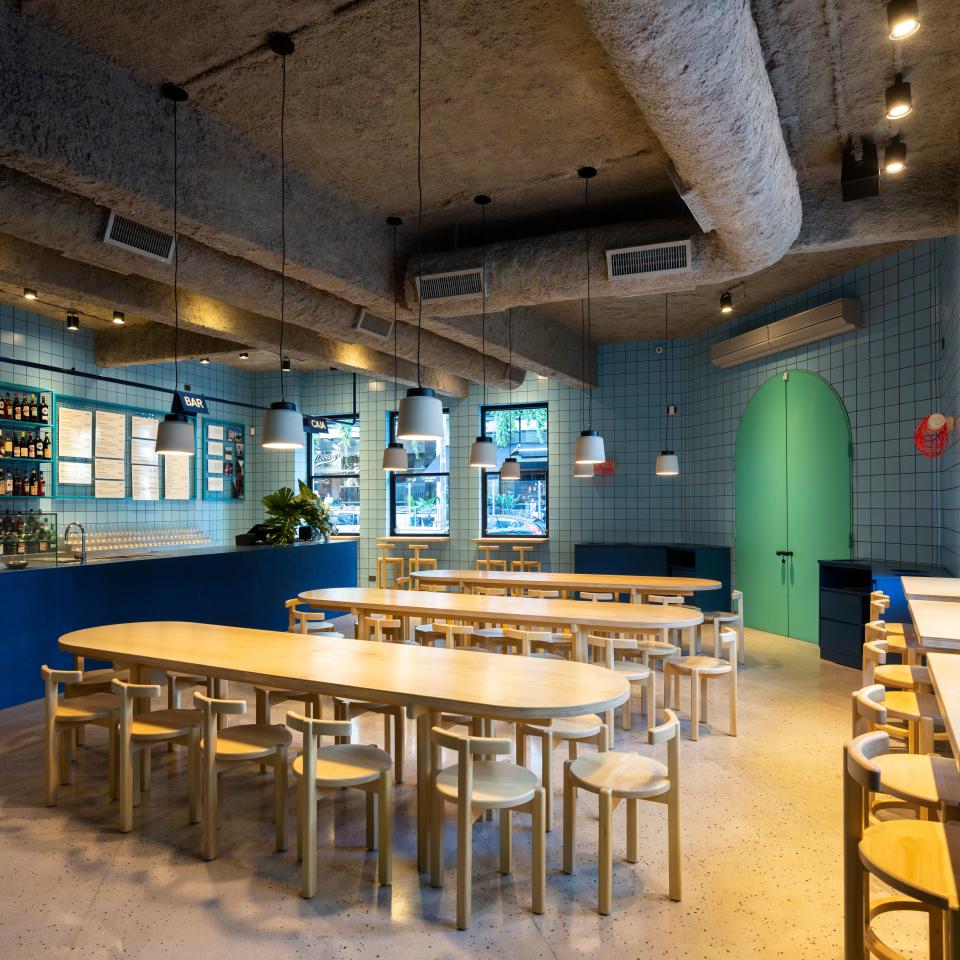
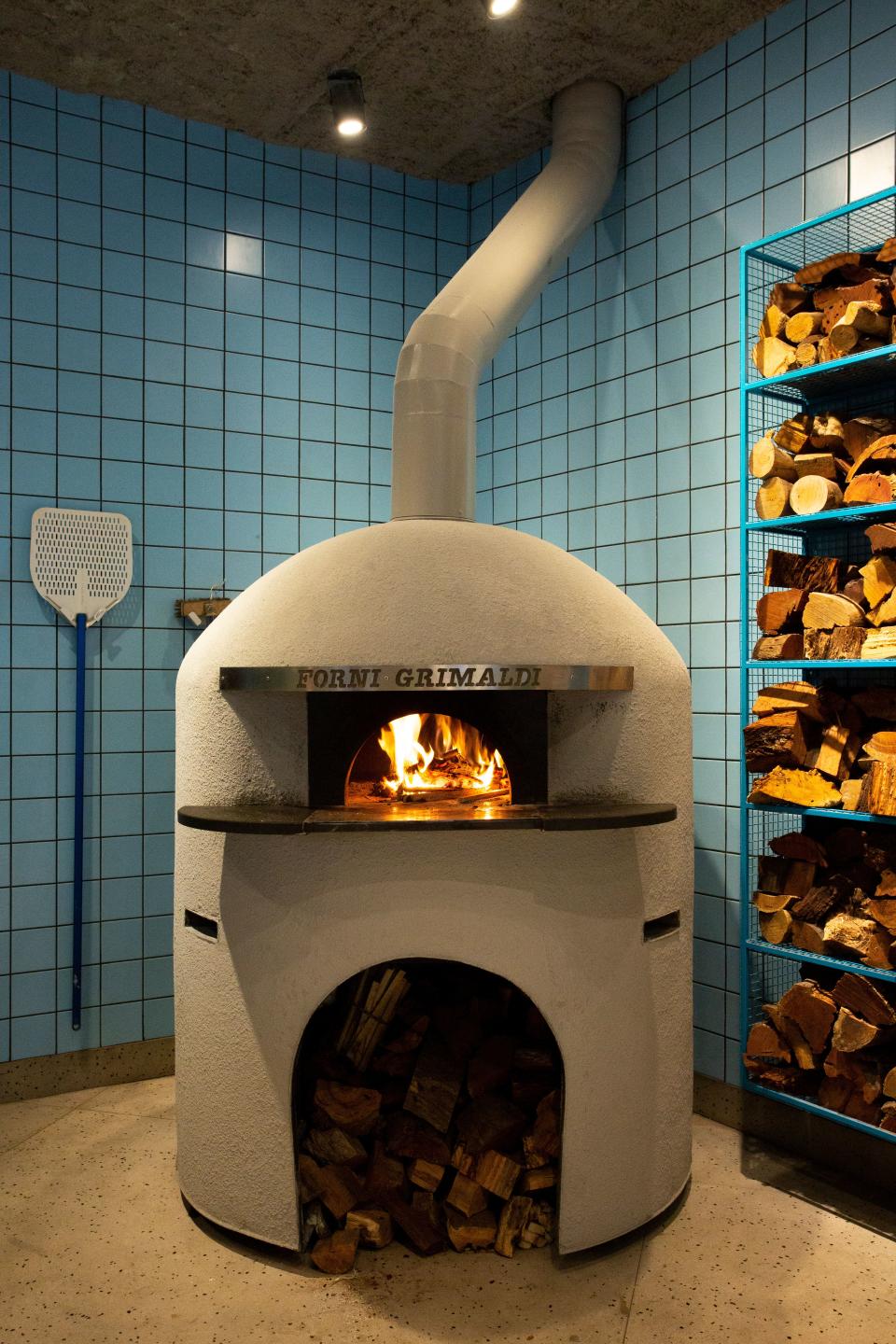
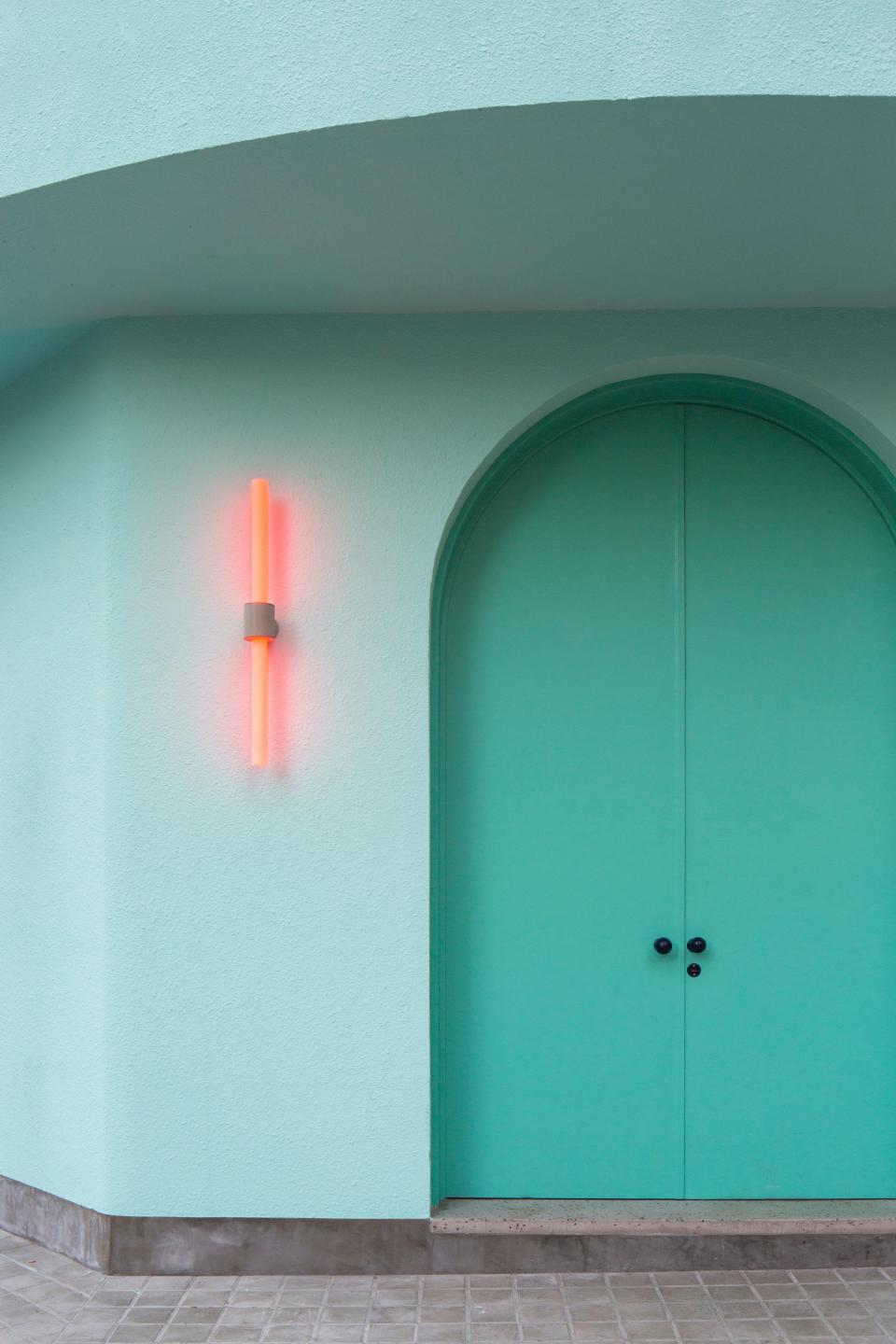
Pivvzza
Located in Soria, Spain, Pivvzza is only 430 square feet. However, the architect, Valentín Sanz of LiquenLAV, made the absolute most of the constrained space, creating super functional pieces to maximize space. The wood stools can be stacked to become tables or high stools, and the shelf carved into the wall near the ceiling provides extra storage and organization, but also serves as a buffer between the guests and employees. Even though it's so small, this pizza shop packs a punch.
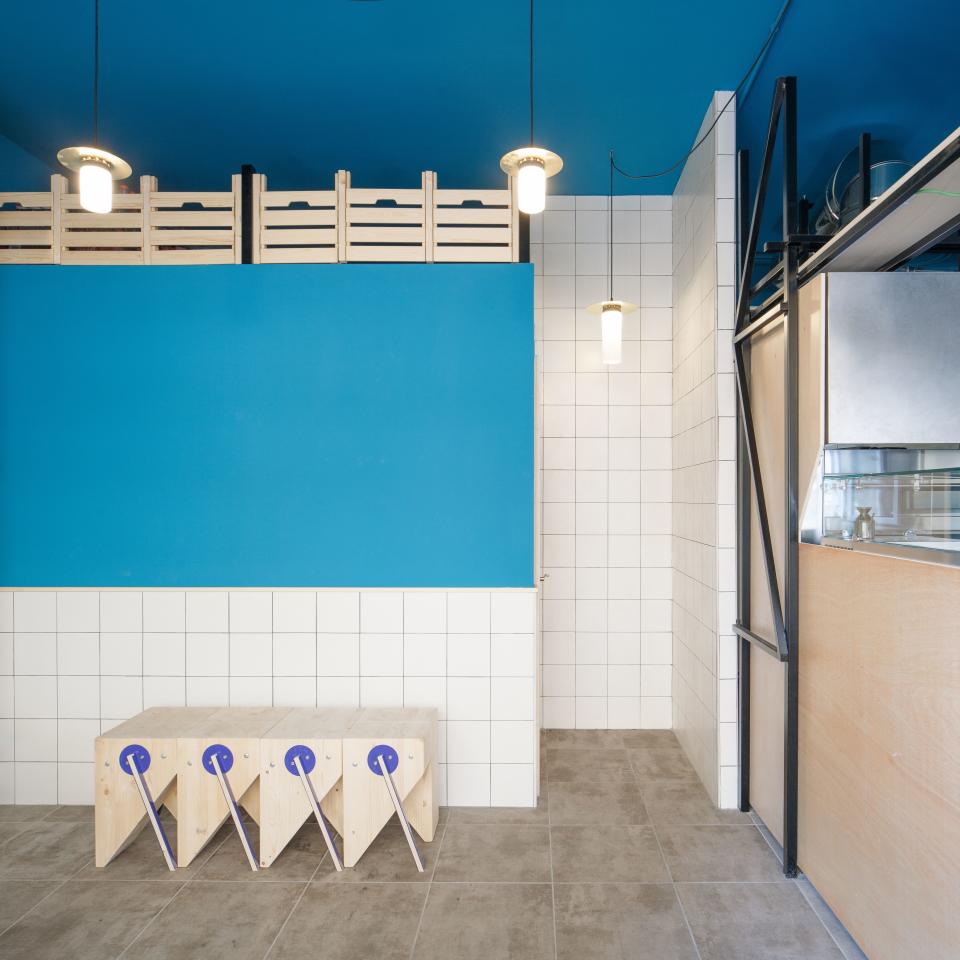
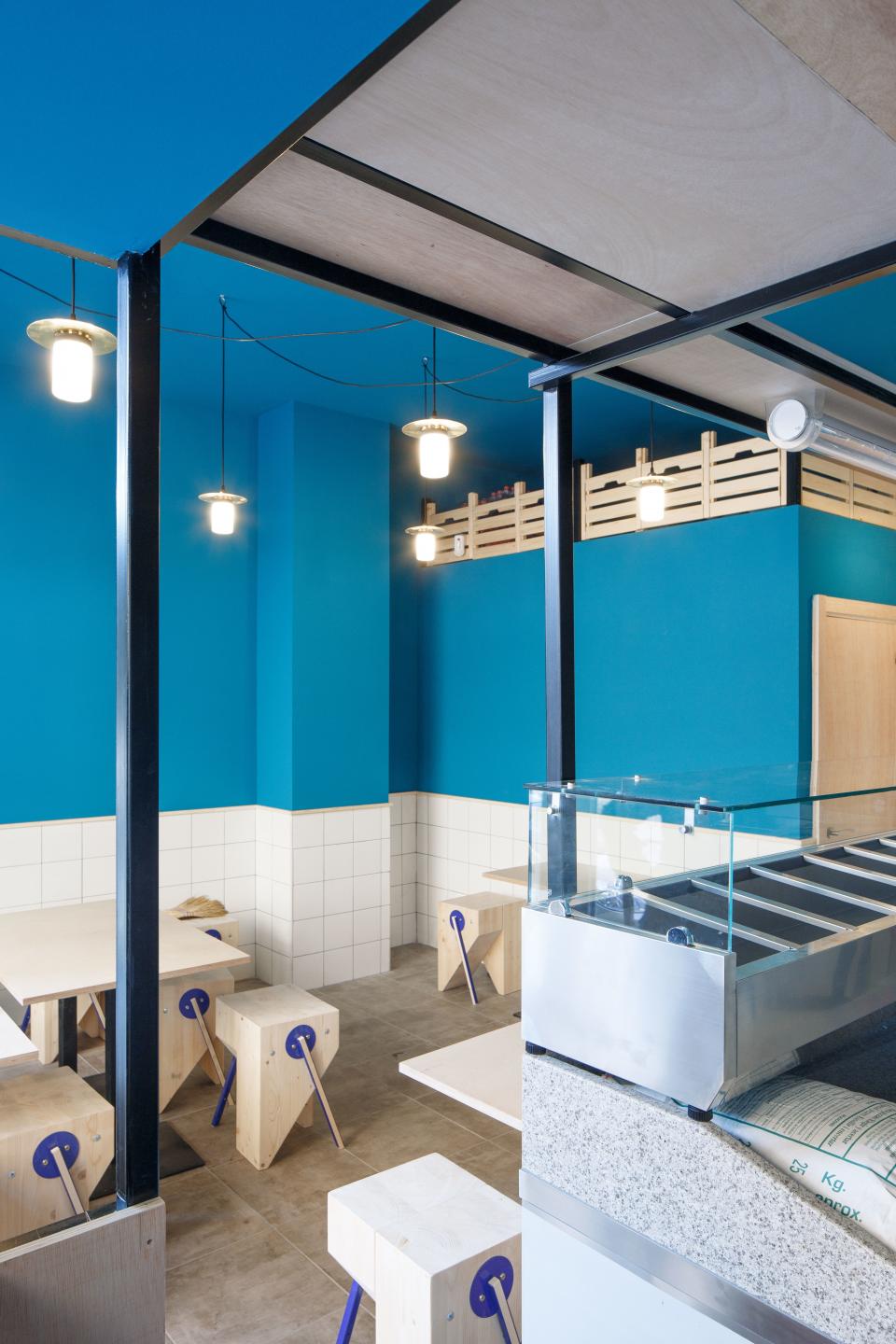
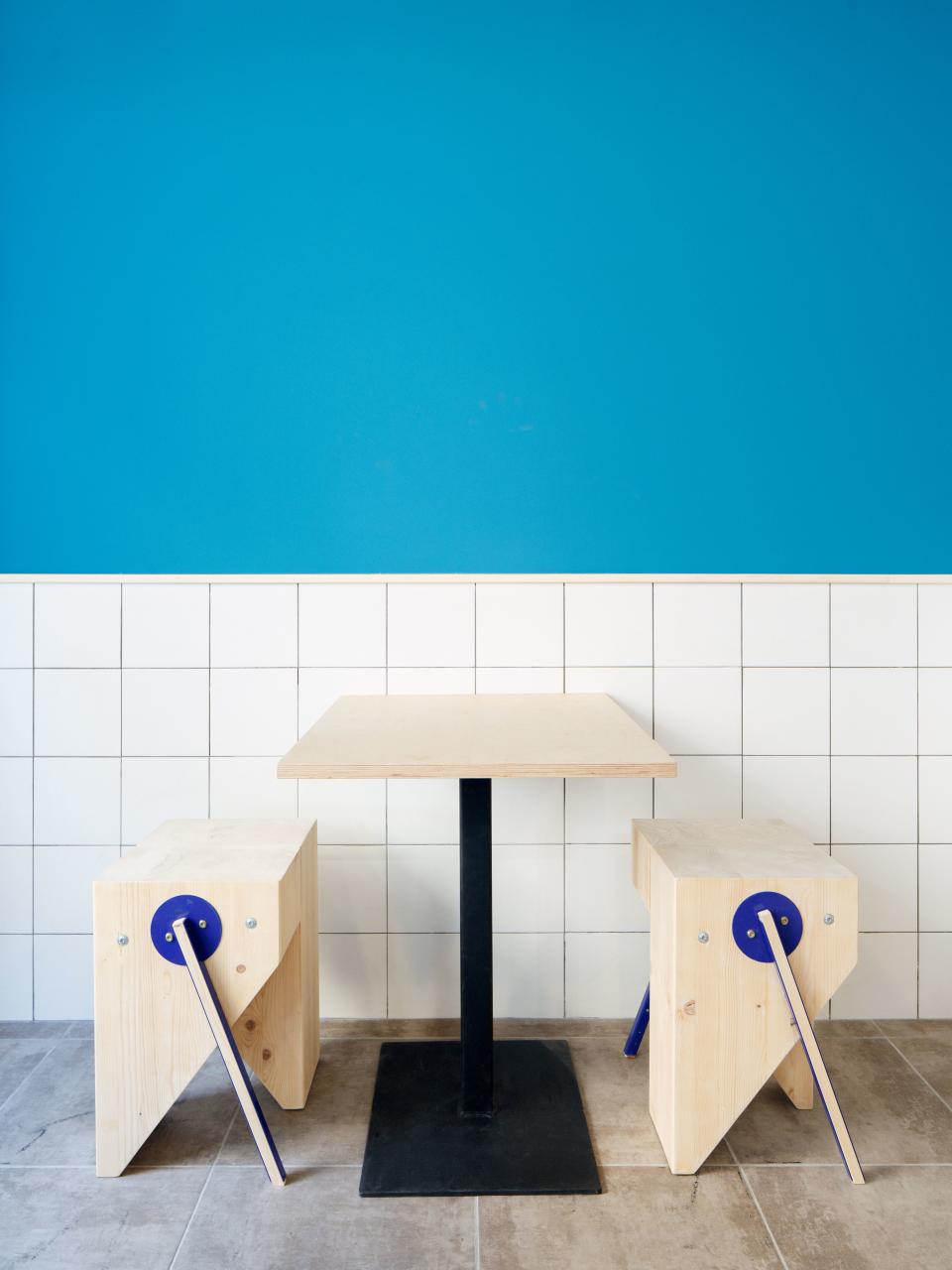
Disco Volante
It's hard not to be totally delighted by the giant disco ball pizza oven at this Austrian pizzeria. It even spins! Located in Vienna and designed by architect Lukas Galehr, Disco Volante dims the lights in the evenings and shines various spotlights onto the oven to create a flood of colorful dots across the space. The name of the pizzeria loosely translates to "flying disc," and is meant to bring up memories of the James Bond villain Emilio Largo's escape vessel and the famous car designed in the early '50s with the same name. Do you see the resemblance? Minimalist black and white tile, clean white walls, and simple wooden chairs provide a perfect contrast to all the glitz and glamour.
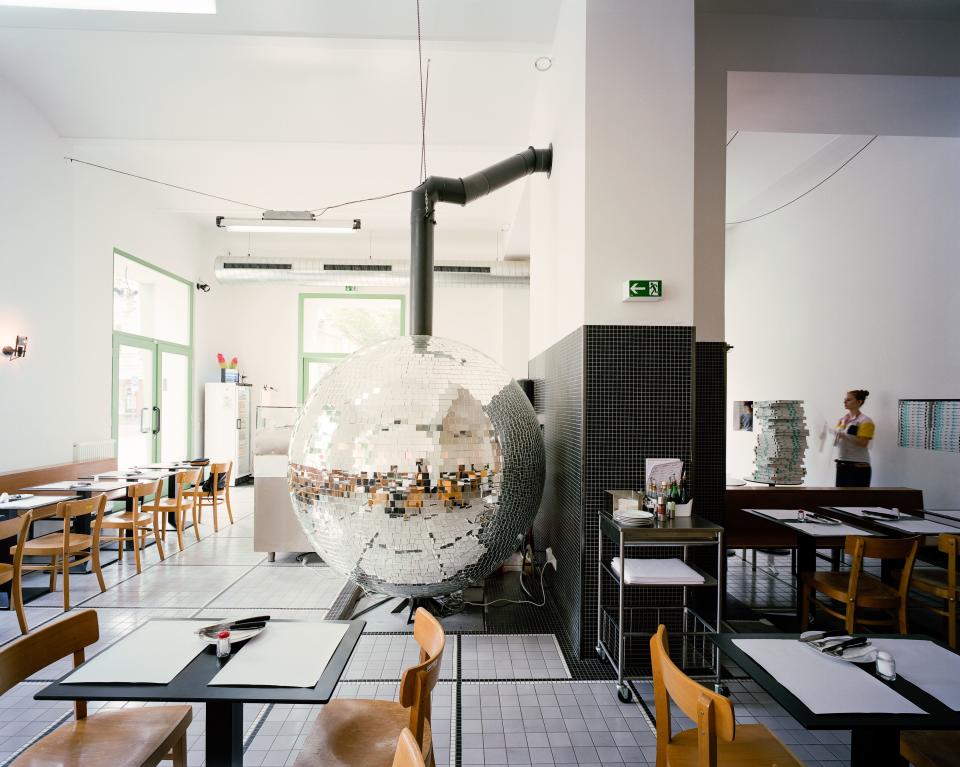
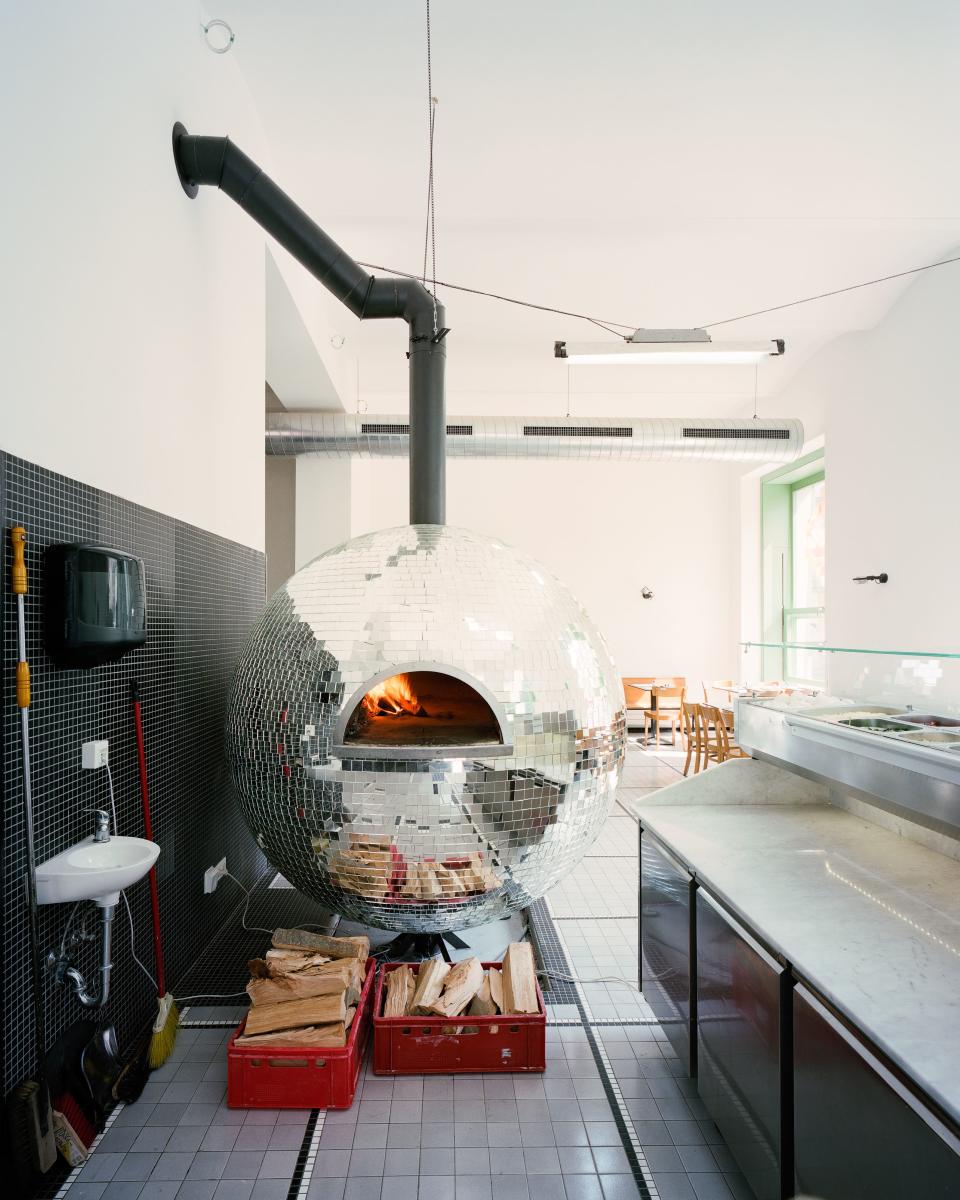
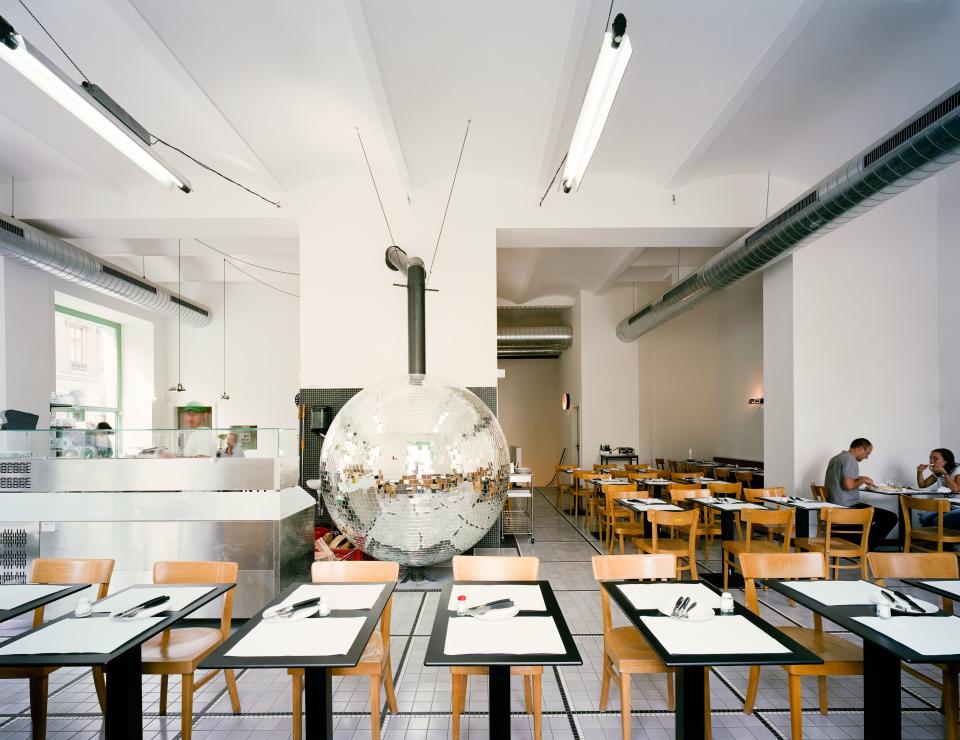
VIA
Part of a chain of pizza places in the Netherlands, this particular VIA, in Zwolle, occupies one of the oldest buildings in town. Studio Modijefsky designed a fabulous interior for the restaurant, with lighting as the star. A colored steel structure dotted with lightbulbs floats overhead, suspended via wire connected to steel strips on the walls boasting their own vertical light fixtures. Elsewhere, more bulbs hang directly from wire, forming different geometric shapes. On ground level, winks of classic Italian design details, like the pink chairs and yellow façade, ensure the whole place is a spectacle.
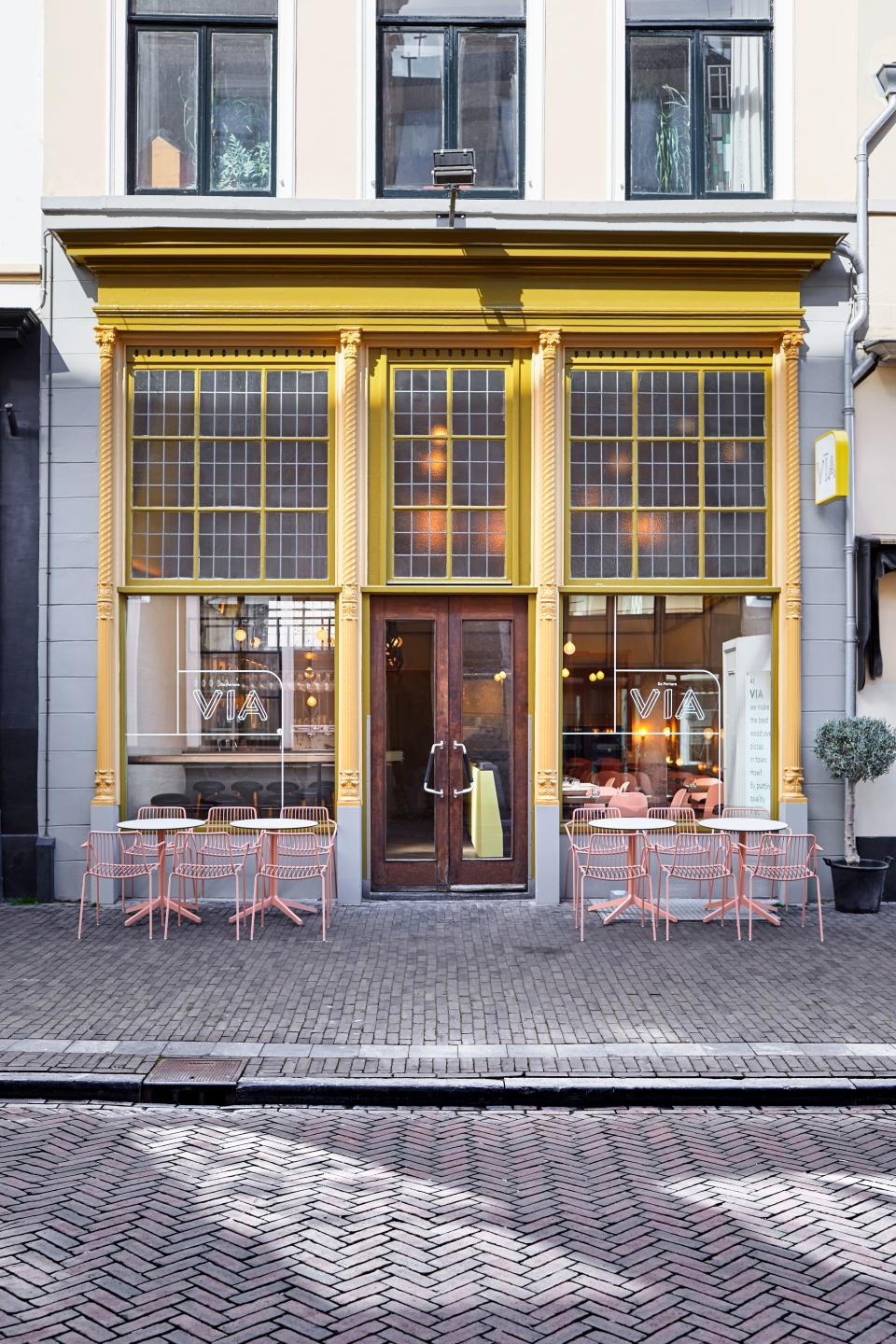
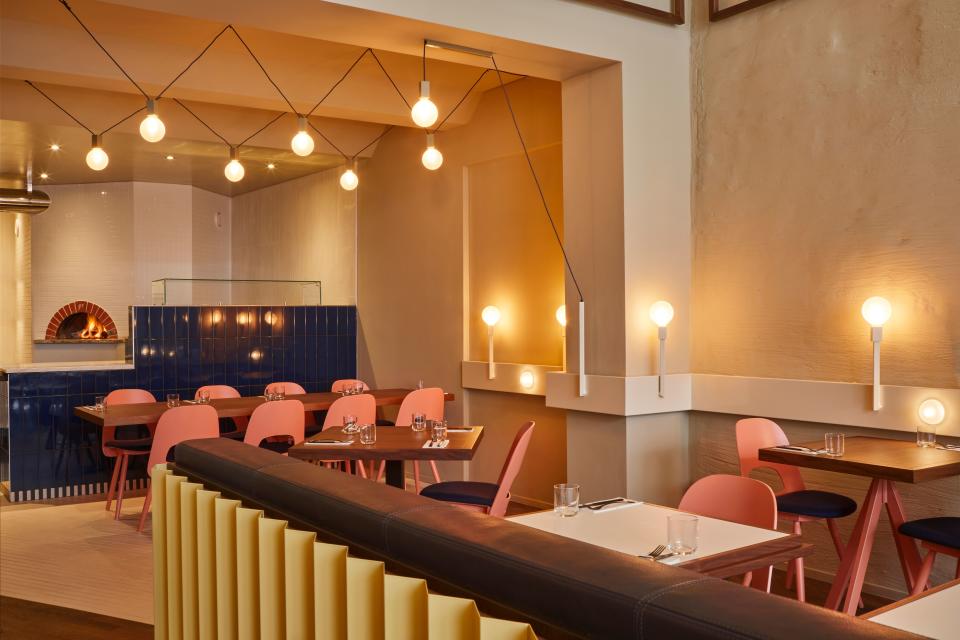
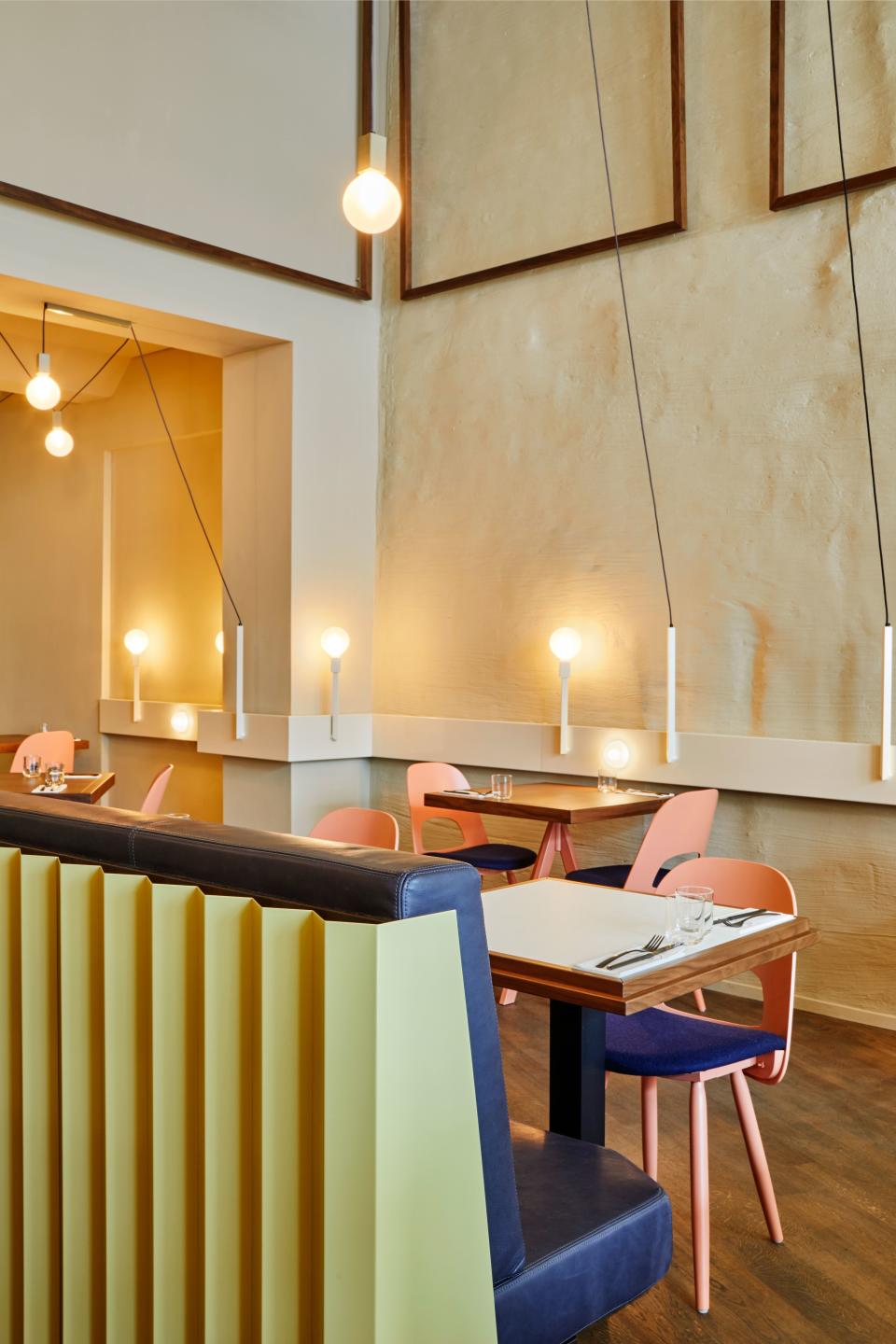
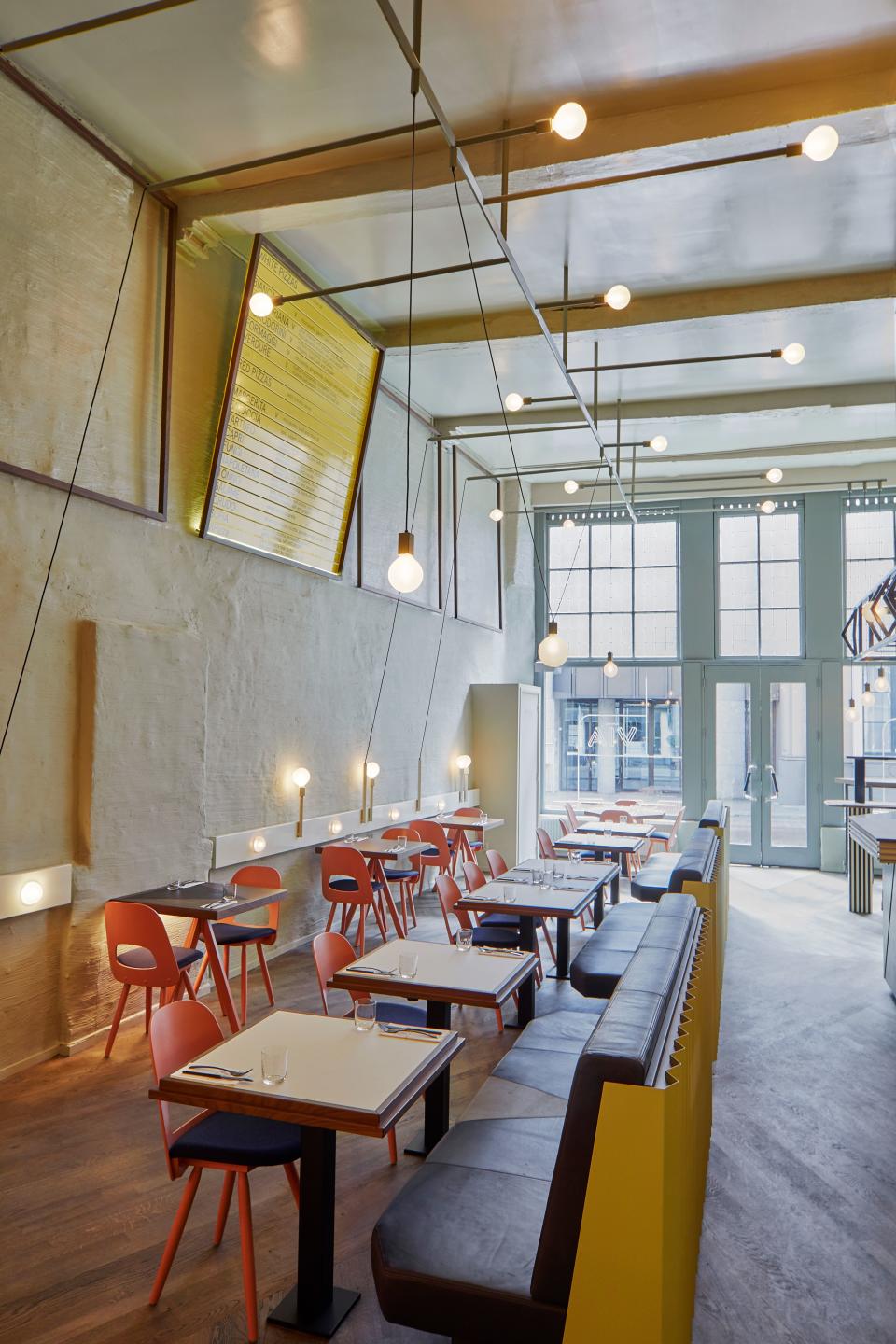
Voodoo Ray's
Six-inch square ceramic tiles are the dominant design element at London's Voodoo Ray's pizza bar. Architects Tyeth Gundry and Christian Ducker used graphics from New York in the 1950s and 1980s as references for the tilework, which includes giant abstract text reading "pizza" along one wall, stretching from the outside of the restaurant to the end of the main counter. (It's so large it's hard to notice initially.) Different colored tiles also section off parts of the space, like the floating shelf and bench (in navy), the serving counter (in teal), and various columns (in yellow and red).
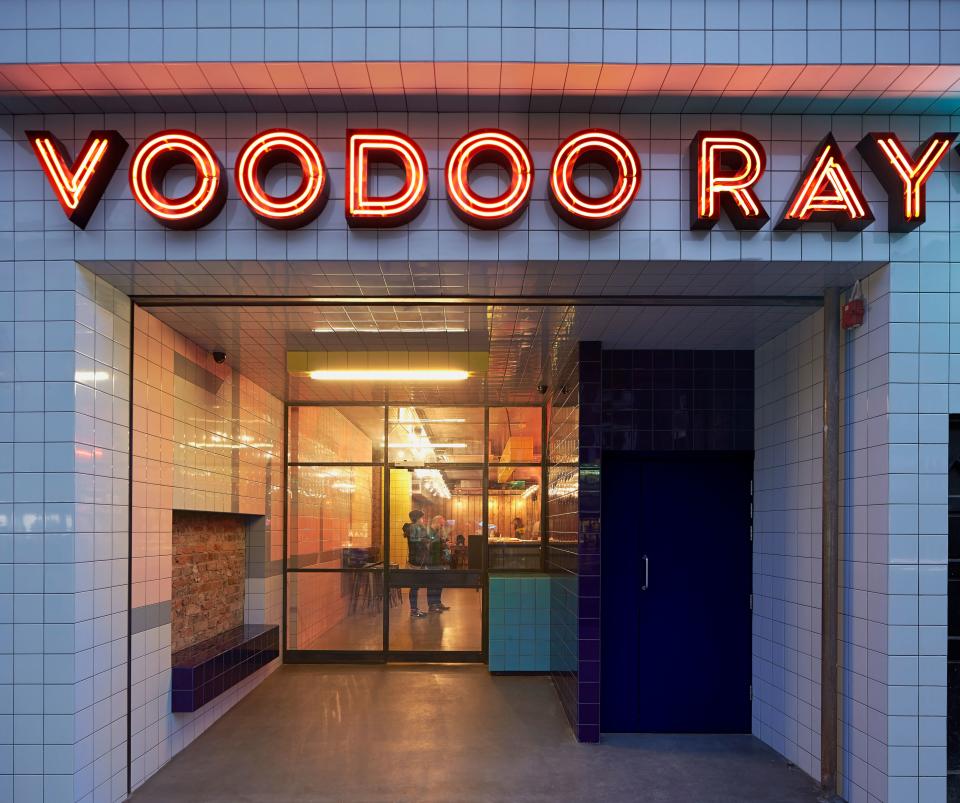
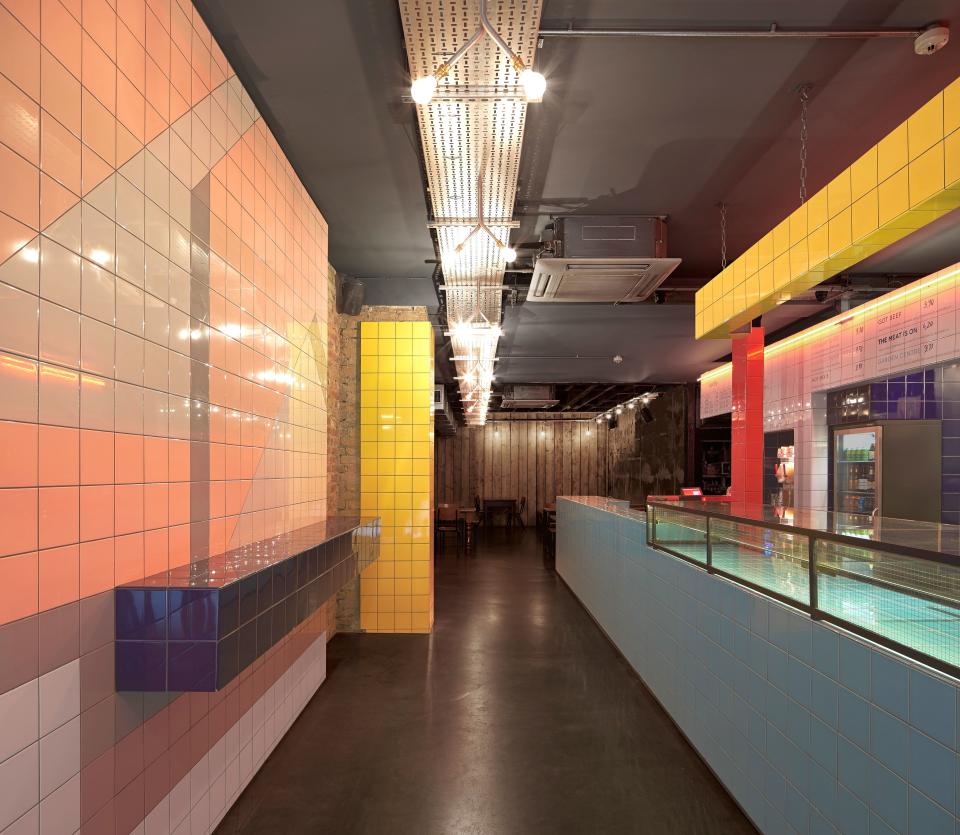
Lievito Gourmet Pizza
Will we ever stop loving terrazzo? Likely not. This muted Beijing pizzeria designed by Italian-German architectural practice MDDM Studio features the material in a soft gray on everything from the floors to walls to the bar. The subtle black steel seating and the brass details scattered throughout keep things sophisticated in the restaurant, which is located on the ground floor of a hotel. Even though the space is long and narrow, with one half of the restaurant overlooking the river and the other with views of the kitchen—the pizzeria feels elegant and intimate rather than cramped.
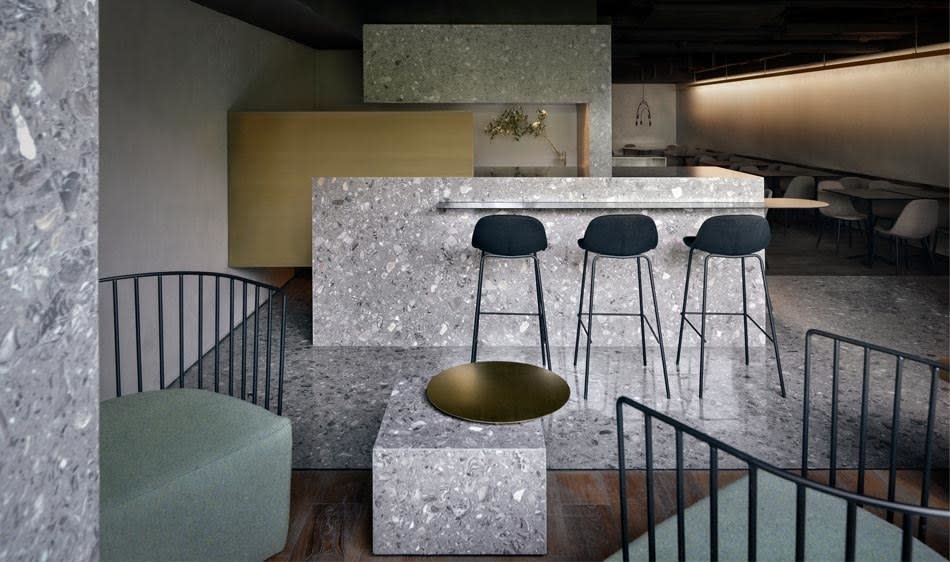
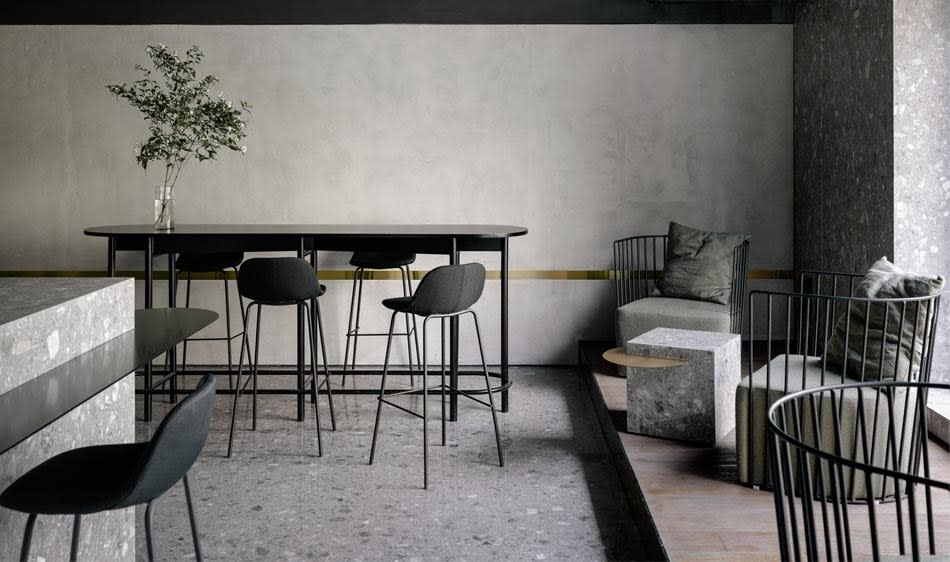
Originally Appeared on Architectural Digest

